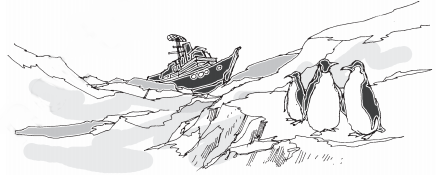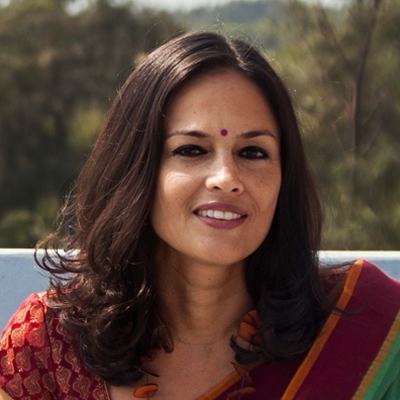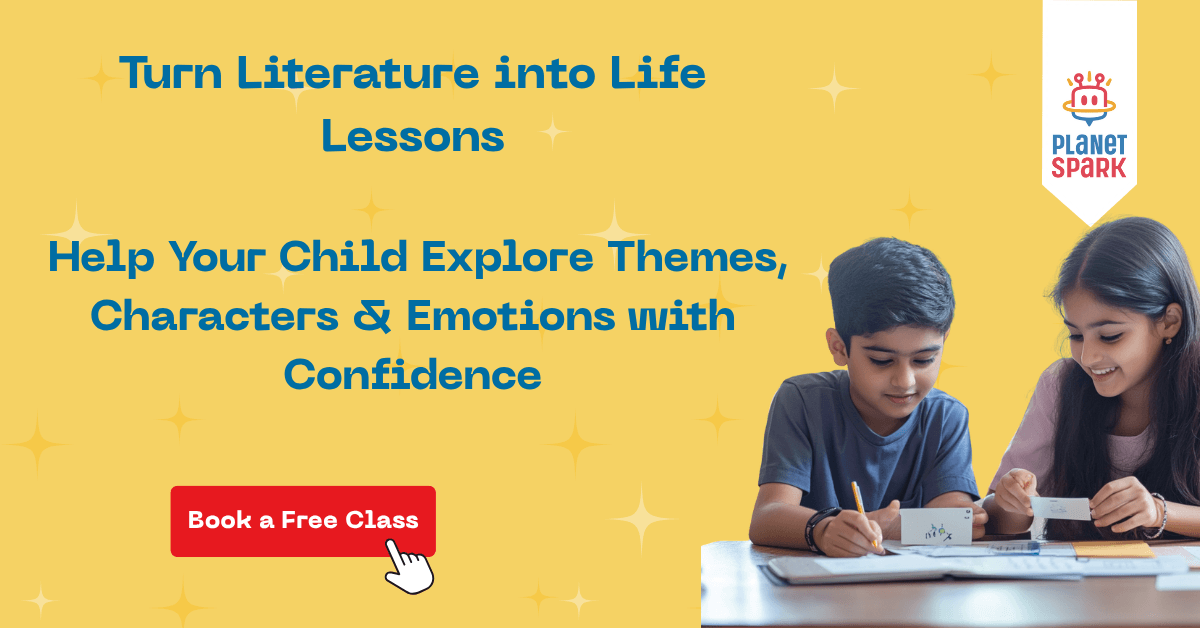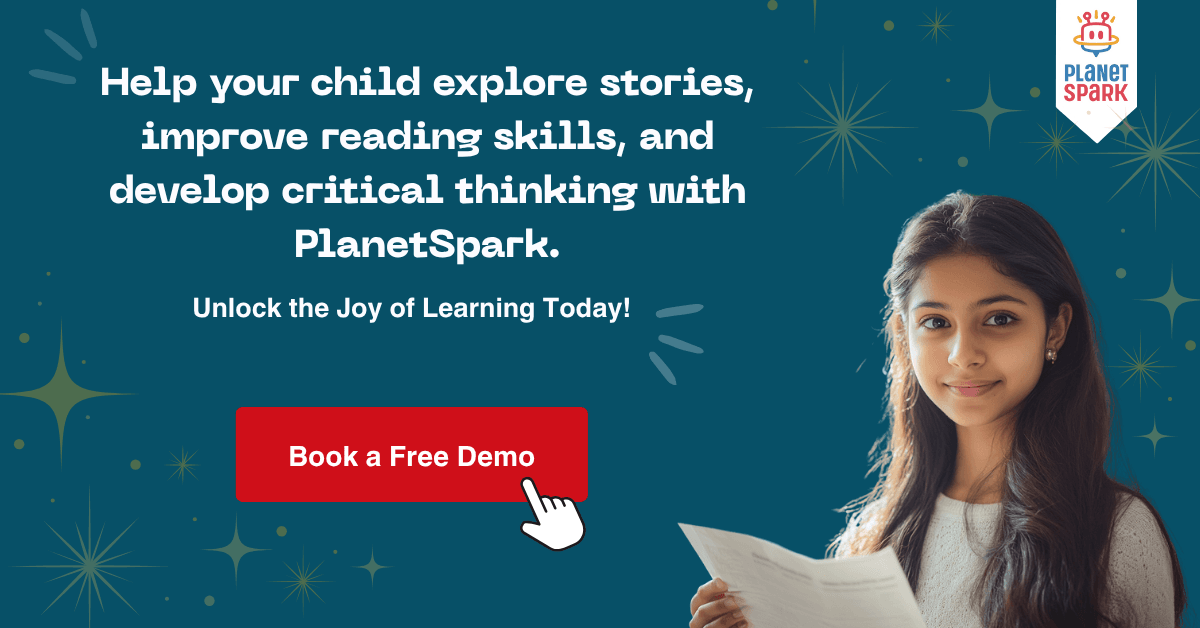Journey to the End of the Earth Summary | NCERT Class 12

Table of Contents
- Journey to the End of the Earth Summary – Detailed Explanati
- Journey to the End of the Earth Question Answer – NCERT Clas
- Journey to the End of the Earth Question Answer - Read and F
- Character Sketches of Journey to the End of the Earth
- Key Takeaways – Journey to the End of the Earth Summary
- Readers Also Read
- Why Choose PlanetSpark?
- Conclusion
- FAQs – Journey to the End of the Earth
Journey to the End of the Earth is an adventurous and insightful narrative that takes readers to Antarctica, the coldest and most remote continent on Earth. Written from the author’s personal experience aboard the Russian research vessel Akademik Shokalskiy, the story describes the long journey, the icy landscapes, unique wildlife, and reflections on climate change and human impact.
In this blog, we will provide a detailed Journey to the End of the Earth summary to help Class 12 students understand the key events and observations. Additionally, we will cover journey to the end of the earth question answer explanations based on the NCERT text, making it easier to prepare for exams and answer comprehension questions confidently.
Journey to the End of the Earth Summary – Detailed Explanation
1. Beginning of the Journey
The author’s journey begins aboard the Russian research vessel Akademik Shokalskiy, departing from Madras and traveling across nine time zones, six checkpoints, and three bodies of water. The journey combines travel by car, airplane, and ship, totaling over 100 hours. Upon first sight of Antarctica, the author experiences a mix of relief, excitement, and awe. The vast icy landscape, uninterrupted blue horizon, and absolute silence create a sense of isolation and grandeur unlike anywhere else on Earth.
This section emphasizes the sheer scale of the journey and the logistical and physical challenges of reaching a continent that is largely untouched by human activity. Students should note how the author’s anticipation builds a sense of adventure, reflecting the excitement and apprehension of exploring a completely foreign environment.
Book a Free Demo Class Today!
Experience how PlanetSpark makes English and literature fun and interactive.
2. Exploring Antarctica
Upon stepping onto Antarctica, the author reflects on its geological history. The continent was once part of the ancient supercontinent Gondwana, which existed about 650 million years ago and included India and several other southern landmasses. Over millions of years, tectonic movements caused the continents to drift apart, eventually shaping the modern Earth. This historical perspective helps students appreciate the vast timeline of Earth’s evolution.
The narrative vividly describes Antarctica’s extreme conditions: the unending sunlight during the austral summer, massive icebergs, some as large as countries, and minimal biodiversity. The author notes the fragility of the ecosystem, explaining how microscopic organisms like phytoplankton play a critical role in supporting the entire marine food chain. These observations show how even small environmental changes can have wide-reaching consequences on the ecosystem.
Students should pay attention to how the author uses descriptive language to convey scale, isolation, and the uniqueness of Antarctica, which can be useful for comprehension and essay questions.
3. Human Impact and Climate Change
Although human civilization has existed for only a tiny fraction of geological time, its impact has been profound. Rapid industrialization, fossil fuel consumption, and population growth have led to global warming, ozone depletion, and climate change. Antarctica, being relatively pristine and never inhabited by humans, provides an ideal location to study environmental changes through ice-core records, which store data about carbon levels over hundreds of thousands of years.
The author participates in the Students on Ice program, which takes high school students to Antarctica to observe climate changes firsthand and learn about environmental conservation. Witnessing glaciers retreat and ice shelves collapse makes the threat of climate change tangible. This section teaches students about the importance of firsthand observation, scientific study, and youth education in addressing global environmental challenges.
4. Memorable Experiences
One of the most striking experiences described is walking on Antarctic ice. The group stood on a metre-thick ice sheet with 180 metres of seawater beneath, surrounded by the stark whiteness of the landscape. The author observed Crabeater seals sunning themselves on ice floes, noting how every component of the ecosystem is interconnected.
This moment reinforces key lessons about nature’s balance, human responsibility, and the beauty of Earth’s most extreme environments. The narrative encourages students to reflect on how small changes, ike the depletion of phytoplankton, can impact the larger ecosystem. This section also highlights personal reflection and emotional responses, showing how exploration leads to deeper understanding and respect for the planet.

Start Your Learning Journey Now!
Discover how students explore stories like Journey to the End of the Earth with expert guidance.
Journey to the End of the Earth Question Answer – NCERT Class 12
Q1. ‘The world’s geological history is trapped in Antarctica.’ How is the study of this region useful to us?
Answer: Antarctica holds ice sheets that have preserved half-million-year-old carbon records, capturing changes in the Earth’s atmosphere over time. By studying ice cores, scientists can understand past climate patterns, levels of greenhouse gases, and environmental shifts. This knowledge helps us analyze current climate change trends, predict future environmental changes, and make informed decisions to protect the planet. The continent essentially acts as a natural archive of the Earth’s geological and climatic history.
Q2. What are Geoff Green’s reasons for including high school students in the Students on Ice expedition?
Answer: Geoff Green includes high school students in the expedition because they are at an age where they are ready to observe, learn, and absorb important lessons about the environment. Unlike retired celebrities or wealthy adults who may contribute in limited ways, students have the idealism, curiosity, and energy to understand the significance of climate change, ecosystems, and conservation. By experiencing Antarctica firsthand, students develop awareness, responsibility, and motivation to take action to protect the planet in the future.
Q3. ‘Take care of the small things and the big things will take care of themselves.’ What is the relevance of this statement in the context of the Antarctic environment?
Answer: This statement highlights the importance of small organisms and processes in maintaining ecological balance. In Antarctica, microscopic phytoplankton play a crucial role in the marine food chain, supporting fish, seals, whales, and birds. Any change in their population due to environmental factors can affect the entire ecosystem, including global carbon cycles. Therefore, caring for and understanding even the smallest components of the environment is essential to safeguard the larger ecological system.
Q4. Why is Antarctica the place to go to, to understand the Earth’s present, past, and future?
Answer: Antarctica is unique and relatively untouched by human activity, making it an ideal location for studying the Earth’s history and environmental changes. The ice sheets contain records of past climate and atmospheric conditions, glaciers reveal the impact of global warming, and the simplicity of the ecosystem makes it easier to observe how small changes affect the planet. Studying Antarctica provides insights into Earth’s geological past, current environmental challenges, and possible future scenarios, helping scientists and students understand and address issues like climate change effectively.
Journey to the End of the Earth Question Answer - Read and Find Out
Q1. How do geological phenomena help us to know about the history of humankind? (Page 19)
Answer: Geological phenomena, such as tectonic movements, formation of continents, and ice-core records in Antarctica, provide clues about Earth’s long history. By studying rock formations, fossils, and ice layers, scientists can understand how the climate, landscapes, and ecosystems changed over millions of years. These changes show the environment in which early humans evolved and help us trace the development of civilizations, agriculture, and human migration patterns. Essentially, geological evidence acts as a timeline of Earth and humankind, revealing the connection between natural events and human evolution.
Q2. What are the indications for the future of humankind? (Page 20)
Answer: Geological and environmental studies indicate that human activities have a direct impact on the planet. For example, melting glaciers, rising sea levels, and increased carbon dioxide levels show that climate change is accelerating. These signs warn that if humans continue to overexploit resources and pollute the environment, it could threaten ecosystems, food chains, and human survival. Conversely, observing these changes also shows that conservation, sustainable practices, and awareness among younger generations, like the Students on Ice program can help protect the planet and ensure a more balanced and sustainable future for humankind.
About the Author – Tishani Doshi

Tishani Doshi is an Indian poet, writer, and journalist known for her reflective and vivid writing. In Journey to the End of the Earth, she combines personal experiences with scientific observations to explore Antarctica’s landscapes and ecosystems.
Her work highlights human impact on the environment and encourages readers, especially students, to reflect on conservation, exploration, and the interconnectedness of life.
Character Sketches of Journey to the End of the Earth
1. The Author / Narrator
The narrator of the story is a curious and observant traveler who takes readers along on an expedition to Antarctica aboard the Russian research vessel Akademik Shokalskiy. The author demonstrates a mix of scientific interest, wonder, and reflection, noting geological history, climate patterns, and the delicate Antarctic ecosystem. Through personal experiences, like walking on ice and observing seals, the author highlights the interconnectedness of life and the importance of environmental conservation.
Key Traits: Curious, reflective, adventurous, environmentally conscious.
Role in the Story: Guides the reader through Antarctica, explains scientific and ecological insights, and emphasizes the lessons humans can learn from nature.
2. Geoff Green
Geoff Green is the founder of the Students on Ice program. He is dedicated to educating young people about the environment by taking high school students to Antarctica. Unlike other explorers or wealthy tourists, Green focuses on inspiring the next generation of policy-makers and conservationists.
Key Traits: Visionary, responsible, educational, inspiring.
Role in the Story: Provides students with hands-on learning experiences about ecosystems, climate change, and human impact, making the expedition both educational and transformative.
3. Students on Ice Participants
The students in the program are young learners who are eager to observe and understand the natural world. Their idealism, curiosity, and enthusiasm allow them to fully absorb the lessons of the expedition. By witnessing Antarctica’s glaciers, ice shelves, and wildlife, they gain awareness of environmental challenges and are encouraged to take responsible action for the planet.
Key Traits: Curious, enthusiastic, idealistic, responsible.
Role in the Story: Represent the future generation who can make a difference in protecting the Earth and addressing climate change.
4. Antarctic Environment / Nature (Symbolic Character)
Though not a human character, the Antarctic landscape itself plays a crucial role in the story. Its immense ice sheets, blue horizons, wildlife, and fragile ecosystems serve as both a teacher and a warning. The continent symbolizes the pristine state of nature, the impact of human activity, and the importance of balance in the ecosystem.
Key Traits: Vast, pristine, fragile, instructive.
Role in the Story: Acts as a living classroom, providing first-hand evidence of climate change, ecological interconnections, and geological history.

Experience Interactive Learning!
Sign up for a demo to participate in discussions, Q&A, and engaging activities.
Themes of Journey to the End of the Earth – Class 12 English
Exploration and Adventure
The story highlights the spirit of human curiosity and adventure. Traveling to one of the most remote and extreme places on Earth, the author showcases the thrill, challenges, and awe associated with exploring unknown territories. This theme encourages students to appreciate scientific exploration and learning through firsthand experiences.Geological History and the Passage of Time
Antarctica’s ice sheets and rock formations tell a story that spans hundreds of millions of years, from the ancient supercontinent Gondwana to the present day. The story emphasizes how Earth’s geological phenomena shape the history of life, including human evolution. Understanding the past helps students reflect on how civilizations and the environment are interconnected over time.Human Impact on the Environment
The story underscores how human activities, such as industrialization and fossil fuel use, affect the planet. Despite humans existing for only a brief period on the geological timeline, we have already caused significant environmental changes. Antarctica, being relatively untouched, serves as a mirror to human impact, revealing the consequences of climate change, ozone depletion, and global warming.Interconnectedness of Life
From microscopic phytoplankton to whales, seals, and icebergs, the story illustrates how every part of the ecosystem is connected. Small changes in the environment can have far-reaching consequences, teaching students the importance of balance, sustainability, and environmental responsibility.Education and Awareness
Through the Students on Ice program, the story emphasizes the importance of educating young people about the planet. Learning in a real-world environment fosters curiosity, responsibility, and action, showing that awareness at a young age can inspire positive change for the future of humankind.Wonder and Reflection
The author frequently reflects on the immensity, isolation, and beauty of Antarctica, evoking a sense of awe and contemplation. This theme encourages students to think deeply about their place in the world, human responsibility, and the fragility of Earth’s ecosystems.

Analysis of Journey to the End of the Earth – NCERT Class 12 English
✔️ Exploration of Human Curiosity
The story captures the essence of human curiosity and the desire to explore unknown territories. By recounting the journey to Antarctica, the author highlights how exploration is not just physical but also intellectual. Students learn how firsthand experiences can deepen understanding of scientific, environmental, and historical concepts.
✔️ Importance of Geological History
Through descriptions of ice sheets, rock formations, and the ancient supercontinent Gondwana, the story emphasizes the significance of geological phenomena. These elements provide insight into Earth’s past, showing how continents shifted, climates changed, and life evolved. This analysis helps students connect human history with geological processes.
✔️ Environmental Awareness and Human Responsibility
The narrative draws attention to the environmental impact of human activities such as industrialization, deforestation, and carbon emissions. By observing melting glaciers and retreating ice shelves, students understand the urgent need for conservation. The story encourages reflection on the consequences of climate change and the role humans must play in protecting the environment.
✔️ Interconnectedness of Life
Antarctica’s ecosystem, from phytoplankton to large marine mammals, demonstrates that even small changes can have significant effects. The story illustrates the fragile balance of nature and teaches students that every component of an ecosystem is crucial, highlighting the importance of sustainability.
✔️ Educational Value of Experiential Learning
Through the Students on Ice program, the author demonstrates how experiential learning can inspire young people. By engaging with the environment directly, students develop awareness, critical thinking, and a sense of responsibility toward the planet. This shows the value of education that goes beyond textbooks.
✔️ Reflection and Perspective
The story encourages readers to reflect on their own relationship with the planet. The vastness and isolation of Antarctica evoke a sense of wonder and humility, helping students appreciate the scale of Earth’s history, the brevity of human existence, and the importance of preserving the environment for future generations.
Key Takeaways – Journey to the End of the Earth Summary
→ Antarctica’s ice sheets and landscapes hold geological and environmental records that help us understand Earth’s past, present, and future.
→ Human activities, even in a short span of time, have a significant impact on the environment, highlighting the urgency of climate awareness and conservation.
→ Small changes in ecosystems, such as the health of phytoplankton, can have far-reaching effects on global biodiversity and climate.
→ Experiential learning, like the Students on Ice program, can inspire young people to understand and protect the planet.
→ Exploration and reflection help students appreciate the interconnectedness of life, the fragility of nature, and the importance of responsible action.
Readers Also Read
The Tiger King – A satirical tale about pride, fate, and human folly as a king hunts 100 tigers, ignoring a prophecy.
Keeping Quiet – Pablo Neruda’s poem urging silence and introspection to understand oneself and the world.
Poets and Pancakes – A humorous look at life in Gemini Studios, exploring creativity, identity, and work.
My Mother at Sixty-Six – Kamala Das reflects on her mother’s aging, highlighting love, loss, and the passage of time.
Lost Spring – Stories of underprivileged children deprived of childhood, exploring poverty and social injustice.

Why Choose PlanetSpark?
Journey to the End of the Earth inspires students to explore, observe, and reflect on the world around them. At PlanetSpark, we help learners connect deeply with such themes through engaging programs that go beyond just reading the text.
Personalized Learning: Tailored lessons help students understand environmental concepts, geological phenomena, and key ideas from stories like Journey to the End of the Earth.
Interactive Sessions: Online classes make learning fun and engaging, allowing students to discuss observations, interpretations, and real-world connections.
Focus on Critical Thinking: Lessons encourage students to analyze causes and effects, reflect on human impact, and connect story insights with environmental awareness.
Practical Worksheets and Activities: Students reinforce learning with exercises, summaries, and Q&A practice based on the story.
Expert Mentors: Experienced teachers guide students through comprehension, ensuring clarity, understanding, and confidence.
Flexible Learning: Online sessions allow students to learn from home at their own pace, making literature and environmental education convenient and effective.
Conclusion
Journey to the End of the Earth takes readers on an unforgettable journey to Antarctica, exploring not just a remote landscape but also Earth’s history, environment, and human impact. Through the author’s experiences, students understand the importance of exploration, reflection, and environmental responsibility.
The story highlights the interconnectedness of life, the significance of geological history, and the effects of human activity on nature. It encourages students to think critically, observe carefully, and appreciate the fragility and beauty of our planet.
By analyzing the summary, characters, themes, and key lessons, students can strengthen their reading comprehension, analytical skills, and exam preparation.
FAQs – Journey to the End of the Earth
1. Who is the author of Journey to the End of the Earth?
The author is Tishani Doshi, an Indian poet, writer, and journalist known for combining personal experiences with environmental insights.
2. Why is Antarctica important for understanding Earth’s history?
Antarctica’s ice sheets and geological features hold records of the planet’s climate and carbon levels, helping scientists study Earth’s past, present, and future.
3. What is the Students on Ice program?
It is an educational expedition that takes high school students to Antarctica, allowing them to experience environmental science firsthand and develop awareness of global ecological issues.
4. How does the story highlight human impact on the environment?
The narrative shows how industrialization, fossil fuel use, and climate change are affecting the planet, emphasizing the urgency of conservation.
5. What lesson does walking on Antarctic ice teach the students?
It illustrates the interconnectedness of life, showing how even small environmental changes can affect ecosystems and the planet as a whole.
Download Free Worksheets
Personalized Communication Report
Record a video to get a AI generated personalized communication report for your child

Hi There, want to try these
tips for your child with
LIVE with our expert coach?
Let's check your child's
English fluency

